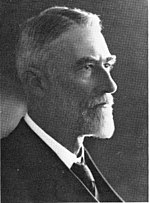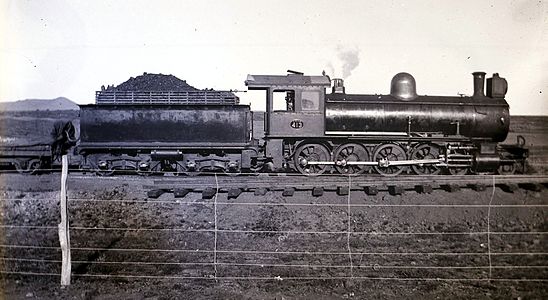South African Class 8A 4-8-0
| IMR 8th Class 4-8-0 CSAR Class 8-L1 4-8-0 South African Classes 8A & 8AW 4-8-0 | |||||||||||||||||||||||||||||||||||||||||||||||||||||||||||||||||||||||||||||||||||||||||||||||||||||||||||||||||||||
|---|---|---|---|---|---|---|---|---|---|---|---|---|---|---|---|---|---|---|---|---|---|---|---|---|---|---|---|---|---|---|---|---|---|---|---|---|---|---|---|---|---|---|---|---|---|---|---|---|---|---|---|---|---|---|---|---|---|---|---|---|---|---|---|---|---|---|---|---|---|---|---|---|---|---|---|---|---|---|---|---|---|---|---|---|---|---|---|---|---|---|---|---|---|---|---|---|---|---|---|---|---|---|---|---|---|---|---|---|---|---|---|---|---|---|---|---|---|
 CSAR Class 8-L1 no. 415, SAR Class 8A no. 1106, Breyten, Transvaal, 4 April 1981 | |||||||||||||||||||||||||||||||||||||||||||||||||||||||||||||||||||||||||||||||||||||||||||||||||||||||||||||||||||||
| |||||||||||||||||||||||||||||||||||||||||||||||||||||||||||||||||||||||||||||||||||||||||||||||||||||||||||||||||||||
| |||||||||||||||||||||||||||||||||||||||||||||||||||||||||||||||||||||||||||||||||||||||||||||||||||||||||||||||||||||
| |||||||||||||||||||||||||||||||||||||||||||||||||||||||||||||||||||||||||||||||||||||||||||||||||||||||||||||||||||||
| |||||||||||||||||||||||||||||||||||||||||||||||||||||||||||||||||||||||||||||||||||||||||||||||||||||||||||||||||||||
| The leading coupled axle had flangeless wheels | |||||||||||||||||||||||||||||||||||||||||||||||||||||||||||||||||||||||||||||||||||||||||||||||||||||||||||||||||||||
The South African Railways Class 8A 4-8-0 of 1902 was a steam locomotive from the pre-Union era in Transvaal.
In 1902, the Imperial Military Railways placed forty Cape 8th Class 4-8-0 Mastodon type steam locomotives in service. When the Central South African Railways was established later that same year, they were designated Class 8-L1. In 1912, when they were assimilated into the South African Railways, they were renumbered and designated Class 8A.[1][2][3]
Manufacturers
[edit]Due to the shortage of locomotives brought about by wartime conditions during the Second Boer War, the Imperial Military Railways (IMR) placed orders for forty Cape 8th Class locomotives with two Scottish locomotive manufacturers in 1901. They were built to the specifications of the 8th Class 4-8-0 Mastodon type which had been designed by H.M. Beatty, the chief locomotive superintendent of the Cape Government Railways (CGR) from 1896 to 1910, and were the last locomotives to be ordered under the military administration of the railways in the Transvaal and Orange Free State.[1][3][4]

Upon the cessation of hostilities in June 1902, the working of all railways was handed over to civil control. On 1 July 1902, the IMR became the Central South African Railways (CSAR).[1]
These forty 8th Class locomotives therefore came onto the CSAR roster, where they were designated Class 8-L1. The twenty engines which had been built by Neilson, Reid and Company were numbered in the range from 401 to 420, and the twenty built by Sharp, Stewart and Company in the range from 421 to 440.[1][3][4][5]
At least one of the engines was named. No. 428 bore the name of Secretary of State for the Colonies Joseph Chamberlain, with the name inscribed on the tender sides rather than on the engine itself.[6]
Characteristics
[edit]The cylinders were arranged outside the bar frame, with balanced slide valves above, actuated by Stephenson valve gear through rocker shafts. The locomotives were delivered with type XF tenders, which rode on 2-axle bogies and had a capacity of 10 long tons (10.2 tonnes) coal and 3,000 imperial gallons (13,600 litres) water.[1][2]
South African Railways
[edit]When the Union of South Africa was established on 31 May 1910, the three Colonial government railways (CGR, Natal Government Railways and CSAR) were united under a single administration to control and administer the railways, ports and harbours of the Union. Although the South African Railways and Harbours came into existence in 1910, the actual classification and renumbering of all the rolling stock of the three constituent railways were only implemented with effect from 1 January 1912.[5][7]
When these forty locomotives were assimilated into the South African Railways (SAR) in 1912, they were renumbered in the range from 1092 to 1131 and designated Class 8A.[3][5][8]
In 1912, all the CGR's 8th Class 2-8-0 Consolidation types and 8th Class 4-8-0 Mastodon types, together with the CSAR's Class 8-L2 and 8-L3 4-8-0 Mastodon type locomotives, were grouped into ten different sub-classes by the SAR. The 4-8-0 locomotives became SAR Classes 8 and 8A to 8F and the 2-8-0 locomotives became Classes 8X to 8Z.[9]
Modification
[edit]During A.G. Watson's term as Chief Mechanical Engineer (CME) of the SAR from 1929 to 1936, many of the Class 8 to Class 8F locomotives were equipped with superheated boilers, larger bore cylinders and either inside or outside admission piston valves. The outside admission valve locomotives had their cylinder bore increased from 18+1⁄2 inches (470 millimetres) to 19 inches (483 millimetres) and retained their existing SAR classifications, while the inside admission valve locomotives had their cylinder bore increased to 20 inches (508 millimetres) and were reclassified by having a "W" suffix added to their existing SAR classifications.[3][9]
Of the Class 8A locomotives, fourteen were equipped with superheated boilers, 19 inches (483 millimetres) bore cylinders and outside admission piston valves, while retaining their Class 8A classification.[9]
Two locomotives were equipped with superheated boilers, 20 inches (508 millimetres) bore cylinders and inside admission piston valves, and were reclassified to Class 8AW.[9]
Service
[edit]Government railways
[edit]In SAR service, the 4-8-0 Class 8 family of locomotives served on every system in the country and, in the 1920s, became the mainstay of motive power on many branch lines. Their final days were spent in shunting service. They were all withdrawn from service by 1972.[3]
Industrial
[edit]In November 1971, one Class 8A locomotive, no. 1126, was sold to the Zambesi Saw Mills (ZSM) in Zambia. This was the last locomotive to be purchased by this logging company, which worked the teak forests which stretched 100 miles (160 kilometres) to the north-west of Livingstone in Zambia. It had built one of the longest logging railways in the world to serve its sawmill at Mulobezi.[10]
Railway operations ceased at Mulobezi around 1972, whilst operation of the line to Livingstone was taken over by the Zambia Railways (ZR) in 1973. After logging operations had ceased and the ZR had taken over the mainline, engine no. 1126 was employed as a shunting locomotive at Mulobezi. It was returned to Livingstone in December 1975 and eventually, in June 1983, it went to the Railway Museum at Livingstone.[10]
Preservation
[edit]| Number | Works nmr | THF /Private | Leaselend / Owner | Current Location | Outside South Africa | ? |
|---|---|---|---|---|---|---|
| 1097 | THF | Plinth | Potchefstroom (Station) | |||
| 1100 | THF | Plinth | Pietersburg (Station) | |||
| 1104 | THF | Plinth | Parys (Station) | |||
| 1106 | Private | Municipality | Ermelo | Plinth Town Centre | ||
| 1126 | Private | Livingstone Railway Museum | Livingstone Railway Museum | Zambia | ||
| 1127 | Private | Municipality | Middelburg | Plinth Town Centre |
Works numbers
[edit]The Classes 8A and 8AW builders, works numbers, renumbering and superheating modifications are listed in the table.[4][5][9]
Builder |
Works No. |
CSAR No. |
SAR No. |
SAR Model |
|---|---|---|---|---|
| Neilson Reid | 6176 | 401 | 1092 | Superheated |
| Neilson Reid | 6177 | 402 | 1093 | Superheated |
| Neilson Reid | 6178 | 403 | 1094 | Superheated |
| Neilson Reid | 6179 | 404 | 1095 | |
| Neilson Reid | 6180 | 405 | 1096 | |
| Neilson Reid | 6181 | 406 | 1097 | Superheated |
| Neilson Reid | 6182 | 407 | 1098 | |
| Neilson Reid | 6183 | 408 | 1099 | |
| Neilson Reid | 6184 | 409 | 1100 | Class 8AW |
| Neilson Reid | 6185 | 410 | 1101 | |
| Neilson Reid | 6186 | 411 | 1102 | |
| Neilson Reid | 6187 | 412 | 1103 | |
| Neilson Reid | 6188 | 413 | 1104 | Superheated |
| Neilson Reid | 6189 | 414 | 1105 | Class 8AW |
| Neilson Reid | 6190 | 415 | 1106 | Superheated |
| Neilson Reid | 6191 | 416 | 1107 | |
| Neilson Reid | 6192 | 417 | 1108 | |
| Neilson Reid | 6193 | 418 | 1109 | |
| Neilson Reid | 6194 | 419 | 1110 | |
| Neilson Reid | 6195 | 420 | 1111 | |
| Sharp Stewart | 4848 | 421 | 1112 | |
| Sharp Stewart | 4849 | 422 | 1113 | |
| Sharp Stewart | 4850 | 423 | 1114 | |
| Sharp Stewart | 4851 | 424 | 1115 | |
| Sharp Stewart | 4852 | 425 | 1116 | |
| Sharp Stewart | 4853 | 426 | 1117 | |
| Sharp Stewart | 4854 | 427 | 1118 | |
| Sharp Stewart | 4855 | 428 | 1119 | |
| Sharp Stewart | 4856 | 429 | 1120 | |
| Sharp Stewart | 4857 | 430 | 1121 | Superheated |
| Sharp Stewart | 4858 | 431 | 1122 | Superheated |
| Sharp Stewart | 4859 | 432 | 1123 | Superheated |
| Sharp Stewart | 4860 | 433 | 1124 | |
| Sharp Stewart | 4861 | 434 | 1125 | |
| Sharp Stewart | 4862 | 435 | 1126 | Superheated |
| Sharp Stewart | 4863 | 436 | 1127 | Superheated |
| Sharp Stewart | 4864 | 437 | 1128 | Superheated |
| Sharp Stewart | 4865 | 438 | 1129 | Superheated |
| Sharp Stewart | 4866 | 439 | 1130 | Superheated |
| Sharp Stewart | 4867 | 440 | 1131 |
Illustration
[edit]The main picture shows SAR Class 8A no. 1106 at Breyten, Transvaal, on 4 April 1981, before it was plinthed at Ermelo. The original appearance of the locomotive with slide valves and its appearance after modification with outside admission piston valves are illustrated by the pictures below.[11]
-
Neilson, Reid-built IMR 8th Class & CSAR Class 8-L1 no. 413, SAR Class 8A no. 1104, c. 1910
-
Sharp, Stewart-built no. 1129, CSAR no. 438 Joseph Chamberlain, alongside a NZASM 14 Tonner, c. 1902
-
Neilson, Reid-built no. 1106, plinthed at Ermelo, Mpumalanga, 10 June 2005
-
Sharp, Stewart-built no. 1126, Livingstone Railway Museum, Zambia, 31 May 1990
References
[edit]- ^ a b c d e Holland, D.F. (1971). Steam Locomotives of the South African Railways. Vol. 1: 1859–1910 (1st ed.). Newton Abbott, England: David & Charles. pp. 124–126. ISBN 978-0-7153-5382-0.
- ^ a b Espitalier, T.J.; Day, W.A.J. (1945). The Locomotive in South Africa - A Brief History of Railway Development. Chapter VI - Imperial Military Railways and C.S.A.R. (Continued). South African Railways and Harbours Magazine, January 1945. pp. 12–13.
- ^ a b c d e f Paxton, Leith; Bourne, David (1985). Locomotives of the South African Railways (1st ed.). Cape Town: Struik. pp. 48–49. ISBN 0869772112.
- ^ a b c Neilson, Reid works list, compiled by Austrian locomotive historian Bernhard Schmeiser
- ^ a b c d Classification of S.A.R. Engines with Renumbering Lists, issued by the Chief Mechanical Engineer's Office, Pretoria, January 1912, pp. 8, 12, 15, 40-41 (Reprinted in April 1987 by SATS Museum, R.3125-6/9/11-1000)
- ^ Soul of A Railway, System 8, Part 1: Pretoria: including local services, workshops and running sheds, Part 1. Caption 2. Archived 19 March 2017 at the Wayback Machine (Accessed on 15 March 2017)
- ^ The South African Railways - Historical Survey. Editor George Hart, Publisher Bill Hart, Sponsored by Dorbyl Ltd., Published c. 1978, p. 25.
- ^ Holland, D. F. (1972). Steam Locomotives of the South African Railways. Vol. 2: 1910-1955 (1st ed.). Newton Abbott, England: David & Charles. p. 139. ISBN 978-0-7153-5427-8.
- ^ a b c d e South African Railways and Harbours Locomotive Diagram Book, 2'0" & 3'6" Gauge Steam Locomotives, 15 August 1941, as amended
- ^ a b "Sitimela", a history of the Zambezi Saw Mills Logging Railway, 1911-1972, Geof M Calvert, 2005, published by the Barotse Development Trust, p. 86, ISBN 0-7974-2837-2
- ^ Middleton, John N. (2002). Railways of Southern Africa Locomotive Guide - 2002 (as amended by Combined Amendment List 4, January 2009) (2nd, Dec 2002 ed.). Herts, England: Beyer-Garratt Publications. p. 18.




